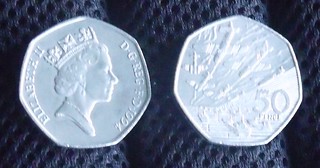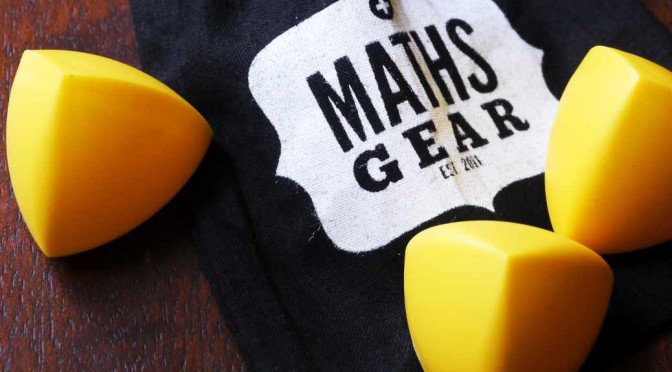By Anupum Pant
Until today, I had no idea that non-spherical objects could have the same diameter at every point! Don’t believe me? Have a look at these wonderful little metal objects that aren’t anything even close to a sphere and are still able to roll a flat surface on them, as spheres would. [Video]
Like Gombocs, these shapes are a Mathematician’s fantasy. They have a generic name – constant width objects. In fact, these carefully machined metal objects could be perfect gifts for your mathematician friend. I know, I would some day, if you think you need these too, you can buy them here. (I’m in no way related to Grad-Illusions, nor am I an affiliate marketer)
Note: Though in some manner they look like Gombocs, they are not Gombocs. To know more about what Gombocs are, read this – [Gomboc – An Object That Never Falls]
How are they made?
Theoretically, to understand how they are made, you need to understand that the 3D objects of constant width are usually* spun out of a 2D object – Just like a sphere can be made by spinning a circle. Though there is a kind of constant width 3D object that is not a spun version of any 2D curve.

The 2D form is called the Reuleaux triangle and it looks like this [image]. The one shown in the link is a constant width curve based on an equilateral triangle (triangle with equal sides). It turns out, you can construct a constant width curve out of any triangle, and a polygon too (like the 50 pence coin shown above made out of a regular heptagon). To make a constant width curve using an equilateral triangle, all you need is a compass, a paper and a pencil:
- Draw an equilateral triangle.
- Put the point of your compass on one vertex.
- Trace out an arc that starts from one of the other vertex and ends at the third one.
- Repeat the same for rest of the two vertices. There! You have your constant width curve. Cut it out of paper.
- Now around an axis dividing the shape into half, spin it. You have a theoretical 3D shape that resembles the one shown in the video above.
Vehicle tyres and square hole drills
So, since these shapes can roll things around like circles can, wheels could be made of these shapes too! Then, why aren’t wheels made that way? That is because when these shapes roll, they don’t have their centers at one place. If vehicles had tyres like these, engineers would have had a hard time designing axle systems.
They are in fact used in a Wankel engine. And since the center traces a square when Reuleaux triangle rolls, they have been used in drills that can drill out square holes.

Random constant width facts:
- There are a few pencils which are manufactured in an extruded-reuleaux triangle shape. These pencils can roll around smoothly like circular pencils.
- For some reason, even guitar picks are often manufactured in these shapes.
- Instead of spinning around a constant width 2D object, a 3D constant width object can be made by modifying flat tetrahedron faces using intersections of sphere faces. As it can’t be done on a lathe, these are particularly hard to machine. It is called the Meissner’s tetrahedron or the Reuleaux Tetrahedron.





